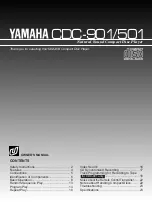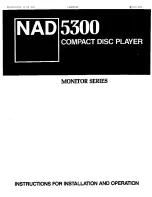
G0677 24" Planer/Sander
-31-
Rotating Carbide
Inserts
Tools Needed:
Qty
Wrench or Socket 19mm ................................... 1
T-Handle Wrench T-20 ...................................... 1
Flat Head Torx Screw T-20 M6-1 x 15 ....... Varies
Carbide Insert 14 x 14 x 2 (30º Bevel) ...... Varies
Pneumatic Tool (Optional) ................................. 1
Torx Bit T-20 (Optional) ..................................... 1
Breaker Bar ....................................................... 1
Hammer ............................................................. 1
The cutterhead is equipped with 188 indexable
carbide inserts. Each insert can be rotated to
reveal any one of its four cutting edges. Therefore,
if one cutting edge becomes dull or damaged,
simply rotate it 90˚ to reveal a fresh cutting edge
(
Figure 36).
Figure 36. Insert rotating sequence.
Reference Dot
In addition, each insert has a reference dot on
one corner. As the insert is rotated, the reference
dot location can be used as an indicator of which
edges are used and which are new. When the
reference dot revolves back around to its starting
position, the insert should be replaced.
To rotate or change a carbide insert:
1. DISCONNECT THE PLANER/SANDER
FROM THE POWER SOURCE!
2. Follow Steps 1-4 on Page 16 to access the
cutterhead.
Planing Workpieces
We do not recommend only planing workpieces
with the Model G0677. Doing so will yield a
rougher, unfinished workpiece with some snipe,
and increase the risk of kickback at the front of
the machine.
If you must plane a workpiece do not set the
cutterhead only farther than 0.5mm on the down-
ward part of the height scale, as shown in
Figure 35. At this point, the cutterhead inserts
are approximately even with the sanding drum.
Moving it lower than this will only reduce contact
the pressure rollers have against the workpiece.
Figure 35. Cutterhead height set for planing.
Poor pressure roller contact will cause the
workpiece to get stuck under the outfeed side of
the planer/sander, so you will have to manually
remove the it from the outfeed side of the table. If
you attempt to do a "planing" only pass and you
notice that the workpiece is not fed completely
out of the machine, then adjust the cutterhead
upwards by 0.1mm or 0.2mm and retry. Repeat
this as necessary.
















































